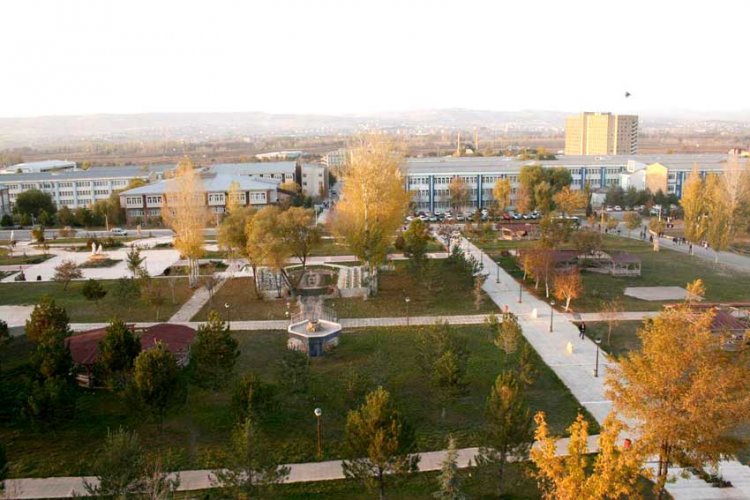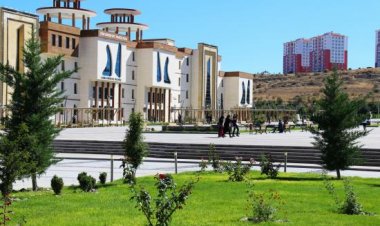The relationship between ABO blood types and development of cerebral venous sinus thrombosis
The relationship between ABO blood types and development of cerebral venous sinus thrombosis Aslı Bolayır; Burhanettin Çiğdem Amaç: Geçtiğimiz birkaç dekat boyunca çok sayıda çalışma ile O dışı (A, B, AB) kan grubuna sahip hastalarda artmış protrombotik eğilim olduğu ortaya konmuştur.Ek olarak birçok trombotik hastalıkla kan grubu arasında yakın ilişki gösterilmiştir. Ancak kan gruplarının serebral venöz sinüs trombozu(SVST) gelişimindeki yeri bilinmemektedir. Yöntem: Çalışmamıza retrospektif olarak 01/01/2008- 30/09/2016 tarihleri arasında Cumhuriyet Üniversitesi Hastanesi Nöroloji Ana Bilim Dalı'na başvuran ve SVST tanısı kesinleşmiş 41 hasta ile benzer yaş ve cinsiyete sahip 50 kontrol dahil edildi.Hasta grubu ve kontrol grubu kan grubu dağılımı açısından kıyaslandı. Bunun yanında hasta grubu kendi içinde beyin parankimal lezyonu olan ve olmayanlar olarak ikiye ayrılarak kan grubunun prognoz üzerindeki etkisi de değerlendirildi. Bulgular: Kontrol grubundaki kan grubu dağılımı Türk toplumunun genel dağılımını yansıtırken, hasta grubunda O dışı kan grubu oranı kontrol grubundan daha yüksekti (%34,%19,5), ancak her iki grup arasındaki bu fark istatistiksel olarak anlamlı değildi. Benzer şekilde hasta grubundaki parankimal lezyonu olan ve olmayan hastalar arasında da kan grubu dağılımı açısından istatistiksel açıdan anlamlı fark yoktu.Yapılan lojistik regresyon analizinde de kan grubu SVST gelişiminde bağımsız bir değişken olarak saptanmadı. Sonuç: Sonuç olarak, O dışı kan grubu yüzdesi SVST'li hastalarda sağlıklı kontrollerden daha yüksektir, ancak bu durum istatistiksel olarak anlamlı değildir. İleride bu konu ile ilgili daha fazla prospektif ve geniş hasta grubuna sahip çalışmaya ihtiyaç vardır.; Objective: Several studies in the last few decades demonstrated that patients with non-O blood groups (A, B, AB) have increased prothrombic tendency. In addition, many thrombotic disorders have been shown to be closely related to the blood group. However, the role of blood types in cerebral venous sinus thrombosis (CVST) development is unknown. Method: Our study included 41 patients who visited the Neurology Department at Cumhuriyet University Hospital and who were diagnosed with CVST between the dates 01/01/2008 and 30/09/ 2016, together with 50 age- and sex-matched controls.The patient and control groups were compared in terms of blood group distribution. In addition, the patient group was divided into two groups according to whether they had parenchymal brain lesions or not, and the effect of the blood group on the prognosis was also assessed. Results: While the blood group distribution in the control group reflected the overall distribution of the Turkish population, the proportion of the non-O blood group in the patient group was higher than in the control group, however the difference between the two groups was not statistically significant. Similarly, there was no statistically significant difference in blood group distribution between patients with and without parenchymal lesions in the patient group. Logistic regression analysis showed that the blood group was not an independent variable in the development of CVST. Conclusions: As a result, the percentage of non-O blood group was higher in patients with CVST than healthy controls; however this is not statistically significant. There is a need for more prospective and extensive future studies on this issue.

The relationship between ABO blood types and development of cerebral venous sinus thrombosis Aslı Bolayır; Burhanettin Çiğdem Amaç: Geçtiğimiz birkaç dekat boyunca çok sayıda çalışma ile O dışı (A, B, AB) kan grubuna sahip hastalarda artmış protrombotik eğilim olduğu ortaya konmuştur.Ek olarak birçok trombotik hastalıkla kan grubu arasında yakın ilişki gösterilmiştir. Ancak kan gruplarının serebral venöz sinüs trombozu(SVST) gelişimindeki yeri bilinmemektedir. Yöntem: Çalışmamıza retrospektif olarak 01/01/2008- 30/09/2016 tarihleri arasında Cumhuriyet Üniversitesi Hastanesi Nöroloji Ana Bilim Dalı'na başvuran ve SVST tanısı kesinleşmiş 41 hasta ile benzer yaş ve cinsiyete sahip 50 kontrol dahil edildi.Hasta grubu ve kontrol grubu kan grubu dağılımı açısından kıyaslandı.
Bunun yanında hasta grubu kendi içinde beyin parankimal lezyonu olan ve olmayanlar olarak ikiye ayrılarak kan grubunun prognoz üzerindeki etkisi de değerlendirildi. Bulgular: Kontrol grubundaki kan grubu dağılımı Türk toplumunun genel dağılımını yansıtırken, hasta grubunda O dışı kan grubu oranı kontrol grubundan daha yüksekti (%34,%19,5), ancak her iki grup arasındaki bu fark istatistiksel olarak anlamlı değildi. Benzer şekilde hasta grubundaki parankimal lezyonu olan ve olmayan hastalar arasında da kan grubu dağılımı açısından istatistiksel açıdan anlamlı fark yoktu.Yapılan lojistik regresyon analizinde de kan grubu SVST gelişiminde bağımsız bir değişken olarak saptanmadı.
Sonuç: Sonuç olarak, O dışı kan grubu yüzdesi SVST'li hastalarda sağlıklı kontrollerden daha yüksektir, ancak bu durum istatistiksel olarak anlamlı değildir. İleride bu konu ile ilgili daha fazla prospektif ve geniş hasta grubuna sahip çalışmaya ihtiyaç vardır.;
Objective: Several studies in the last few decades demonstrated that patients with non-O blood groups (A, B, AB) have increased prothrombic tendency. In addition, many thrombotic disorders have been shown to be closely related to the blood group. However, the role of blood types in cerebral venous sinus thrombosis (CVST) development is unknown. Method: Our study included 41 patients who visited the Neurology Department at Cumhuriyet University Hospital and who were diagnosed with CVST between the dates 01/01/2008 and 30/09/ 2016, together with 50 age- and sex-matched controls.The patient and control groups were compared in terms of blood group distribution. In addition, the patient group was divided into two groups according to whether they had parenchymal brain lesions or not, and the effect of the blood group on the prognosis was also assessed. Results: While the blood group distribution in the control group reflected the overall distribution of the Turkish population, the proportion of the non-O blood group in the patient group was higher than in the control group, however the difference between the two groups was not statistically significant. Similarly, there was no statistically significant difference in blood group distribution between patients with and without parenchymal lesions in the patient group. Logistic regression analysis showed that the blood group was not an independent variable in the development of CVST. Conclusions: As a result, the percentage of non-O blood group was higher in patients with CVST than healthy controls; however this is not statistically significant. There is a need for more prospective and extensive future studies on this issue.

 Bilgi
Bilgi 















